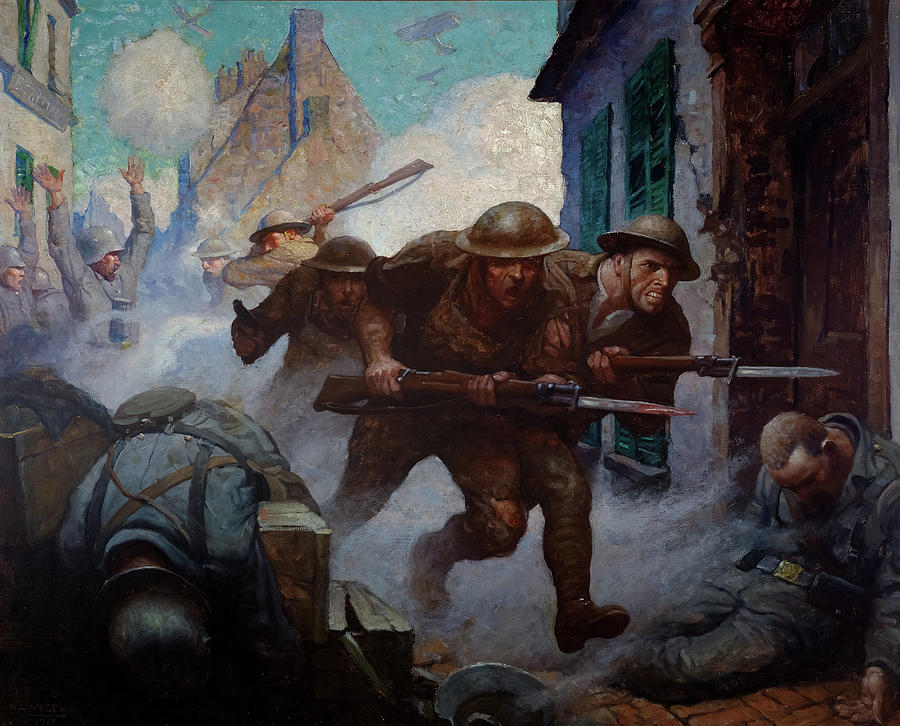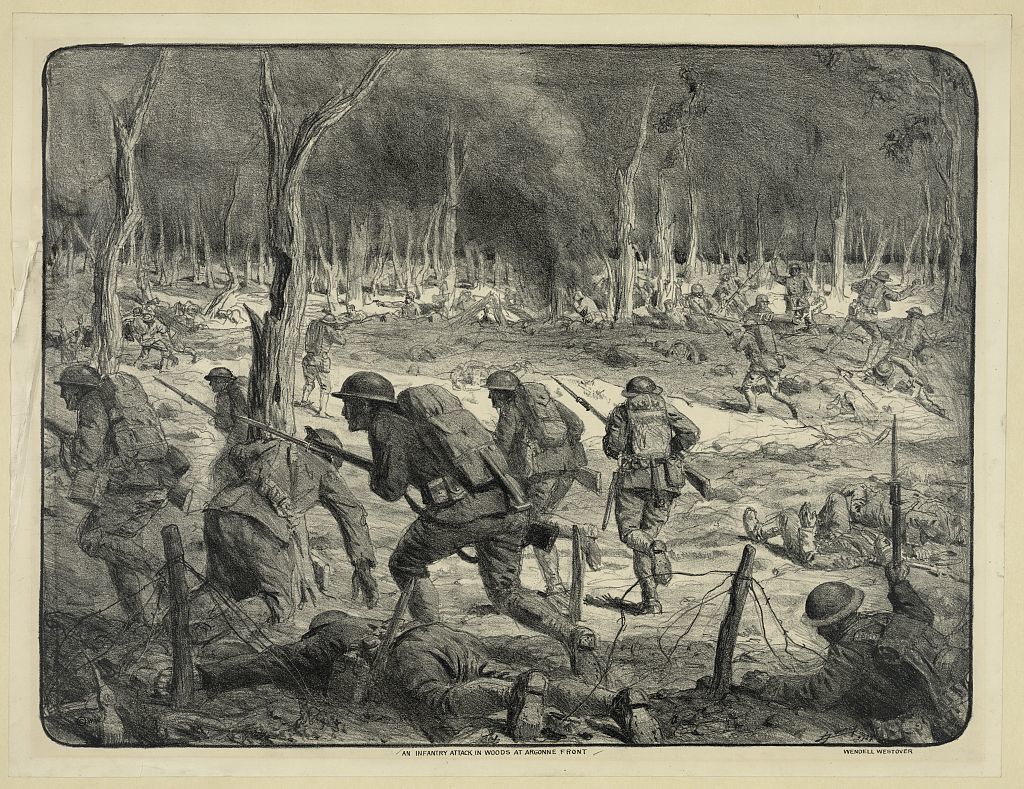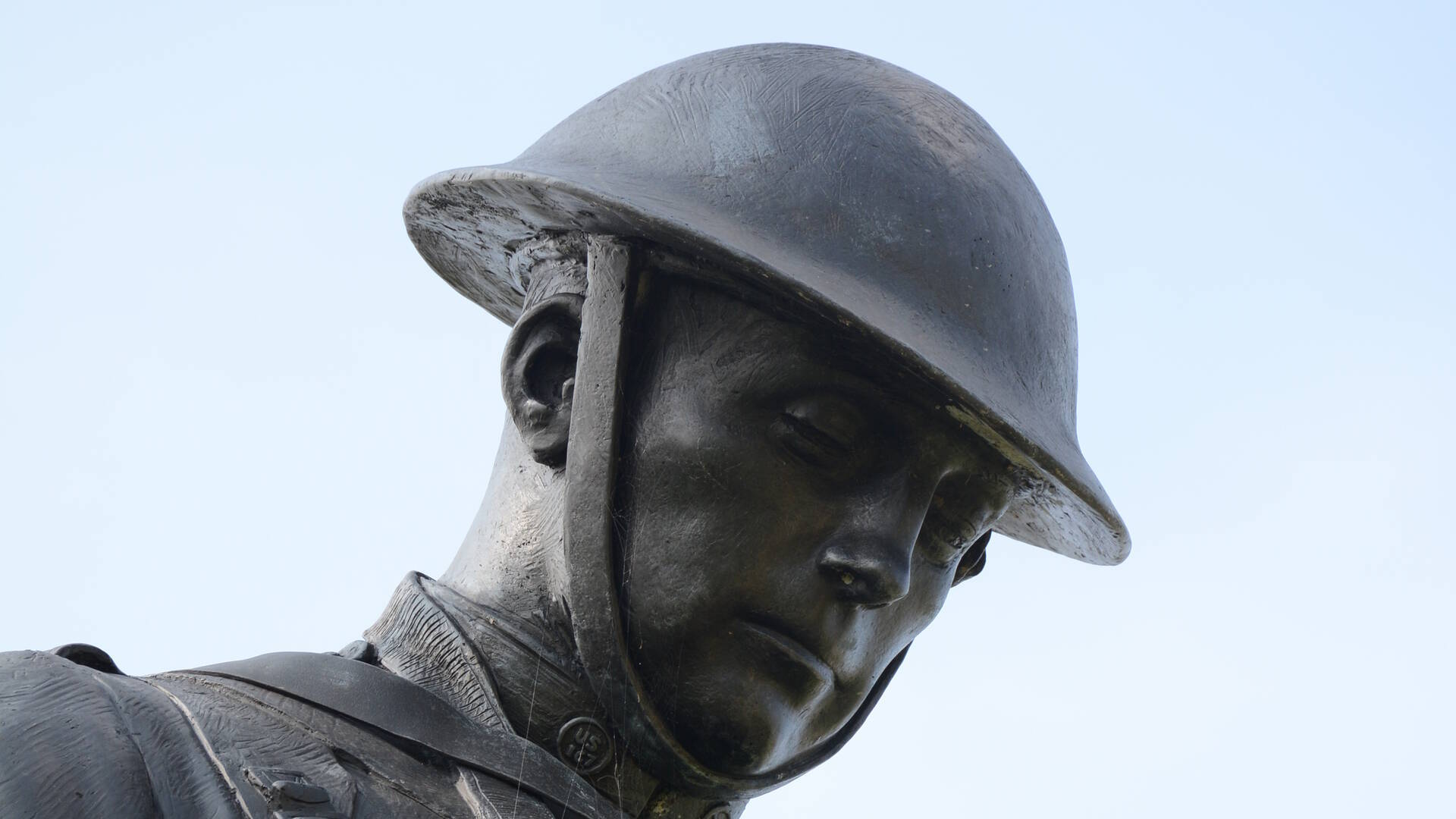
Les "boulders" (rochers en français) marquent l'avance et le secteur d'attaque de la 2ème Division d'Infanterie de l'armée Américaine en 1918.

Histoire de la 2e division U.S. : Les premiers éléments de la 2e division d’infanterie U.S. débarquent en France au mois de juillet 1917. A partir du 24 septembre, la brigade d’infanterie et la brigade de marine se rejoignent et forment la 2e division d’infanterie placée sous les ordres du brigadier général C.A. DOYEN. Le 26 septembre, la 2e division est officiellement créée. A partir du 10 mai 1918, la division est jugée opérationnelle et est affectée au Xe C.A. français.
Suite à l’offensive allemande du 27 mai 1918 sur le Chemin des Dames, la 2e U.S. division est appelée à la rescousse pour stopper l’ennemi dans la région de Château-Thierry et contre-attaquer dans le bois de Belleau.
Elle participe à la contre-attaque française du 18 juillet et s’illustre dans la région de Villers-Cotterêts et de Soissons.

Le 12 septembre, la division participe à la réduction du saillant de Saint-Mihiel, première opération 100 % américaine. Le 26 septembre 1918, alors que l’armée américaine lance une offensive générale entre Argonne et Moselle, la 2e U.S. division ainsi que la 36e U.S. division sont rattachées à la 4e armée française pour l’épauler dans la bataille de Champagne. Le 3 octobre, les deux divisions réussissent à s’emparer du Blanc-Mont et à briser la ligne Hindenbourg.
À partir du 1er novembre, la 2e U.S. division réintègre le Ve corps d’armée U.S. et participe à la phase finale de l’offensive Meuse-Argonne

Ces bornes sont réalisées en béton et comportent une étoiles à cinq branches sur laquelle se trouve une plaque en bronze avec une tête d'indien sur fond d'étoile.C'est l'écusson de la 2 nd Division d'Infanterie Américaine.
La date inscrite sur chaque borne indique l'avancée américaine. Certaines de ces plaques ont aujourd'hui disparu.
Les "boulders" sont au nombre de 24:
2 au bois de Belleau (1 près du monument du génie US et l'autre près du cimetière)
1 au nord de Bouresches
1 à Lucy le Bocage
3 au saillant de St-Mihiel
4 entre Sommepy et St Etienne à Arnes
1 à Mouzon
2 à Moulins-Saint-Hubert
1 entre Nouart et Buzancy
1 au sud de Beaumont en Argonne
1 à Letanne
1 au sud de Landres et Saint-Georges
1 au sud de Villemontry
1 à Essômes-sur-Marne-Le Thiolet
1 à Essômes sur Marne-Vaux
1 à Parcy et Tigny
1 entre Villers Cotterêts et Soissons sur la RN2
1 à Vierzy

The "boulders" mark the advance and the sector of attack of the 2nd Infantry Division of the American Army in 1918.
History of the 2nd U.S. Division: The first elements of the 2nd U.S. Infantry Division landed in France in July 1917. On 24 September, the infantry brigade and the marine brigade joined to form the 2nd Infantry Division under the command of Brigadier General C.A. DOYEN. On September 26th, the 2nd division was officially created. As of May 10, 1918, the division was deemed operational and was assigned to the French Xth Corps.
Following the German offensive of May 27, 1918 on the Chemin des Dames, the 2nd U.S. Division was called to the rescue to stop the enemy in the Château-Thierry region and to counterattack in Belleau Wood.
It took part in the French counter-attack of July 18 and distinguished itself in the Villers-Cotterêts and Soissons region.
On 12 September, the division took part in the reduction of the Saint-Mihiel salient, the first all-American operation. On 26 September 1918, as the American army launched a general offensive between Argonne and Moselle, the 2nd U.S. division and the 36th U.S. division were attached to the 4th French army to support it in the battle of Champagne. On October 3rd, the two divisions succeeded in taking the Blanc-Mont and in breaking the Hindenbourg line.
From November 1st, the 2nd U.S. division rejoined the Vth U.S. Army Corps and participated in the final phase of the Meuse-Argonne offensive.
These markers are made of concrete and have a five-pointed star on which is a bronze plaque with an Indian head on a star background, the crest of the 2nd U.S. Infantry Division.
The date written on each marker indicates the American advance. Some of these plaques have now disappeared.
The "boulders" are 24 in number:
2 in Belleau wood (1 near the US engineer monument and the other near the cemetery)
1 in the north of Bouresches
1 at Lucy le Bocage
3 at the salient of St-Mihiel
4 between Sommepy and St Etienne à Arnes
1 at Mouzon
2 in Moulins-Saint-Hubert
1 between Nouart and Buzancy
1 south of Beaumont en Argonne
1 in Letanne
1 south of Landres and Saint-Georges
1 south of Villemontry
1 in Essômes-sur-Marne-Le Thiolet
1 in Essômes sur Marne-Vaux
1 in Parcy and Tigny
1 between Villers Cotterêts and Soissons on the RN2
1 in Vierzy